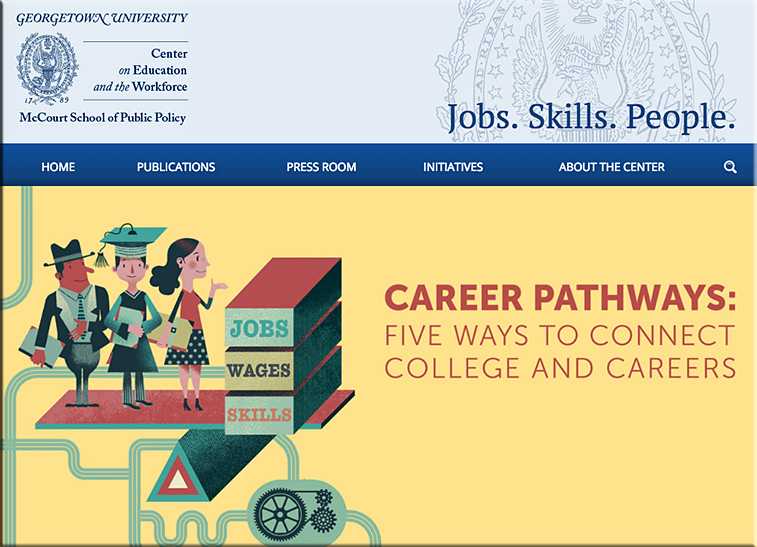Career Pathways: Five Ways to Connect College and Careers calls for states to help students, their families, and employers unpack the meaning of postsecondary credentials and assess their value in the labor market.
Excerpt:
If students are investing more to go to college, they need to have answers to basic questions about the value of postsecondary education. They need better information to make decisions that have lifelong economic consequences.
Getting a college education is one of the biggest investments people will make in their lives, but the growing complexity of today’s economy makes it difficult for higher education to deliver efficiency and consistent quality. Today’s economy is more intricate than those of decades past.
It’s Time to Fix Higher Education’s Tower of Babel, Says Georgetown University Report
The lack of transparency around college and careers leads to costly, uninformed decisions
(Washington, D.C., July 11, 2017) — A new report from the Georgetown University Center on Education and the Workforce (Georgetown Center), Career Pathways: Five Ways to Connect College and Careers, calls for states to help students, their families, and employers unpack the meaning of postsecondary credentials and assess their value in the labor market.
Back when a high school-educated worker could find a good job with decent wages, the question was simply whether or not to go to college. That is no longer the case in today’s economy, which requires at least some college to enter the middle class. The study finds that:
- The number of postsecondary programs of study more than quintupled between 1985 and 2010 — from 410 to 2,260;
- The number of colleges and universities more than doubled from 1,850 to 4,720 between 1950 and 2014; and
- The number of occupations grew from 270 in 1950 to 840 in 2010.
The variety of postsecondary credentials, providers, and online delivery mechanisms has also multiplied rapidly in recent years, underscoring the need for common, measurable outcomes.
College graduates are also showing buyer’s remorse. While they are generally happy with their decision to attend college, more than half would choose a different major, go to a different college, or pursue a different postsecondary credential if they had a chance.
The Georgetown study points out that the lack of information drives the higher education market toward mediocrity. The report argues that postsecondary education and training needs to be more closely aligned to careers to better equip learners and workers with the skills they need to succeed in the 21st century economy and close the skills gap.
The stakes couldn’t be higher for students to make the right decisions. Since 1980, tuition and fees at public four year colleges and universities have grown 19 times faster than family incomes. Students and families want — and need — to know the value they are getting for their investment.
Also see:
- Trumping toward college transparency — from linkedin.com by Anthony Carnevale
The perfect storm is gathering around the need to increase transparency around college and careers. And in accordance with how public policy generally comes about, it might just happen.









